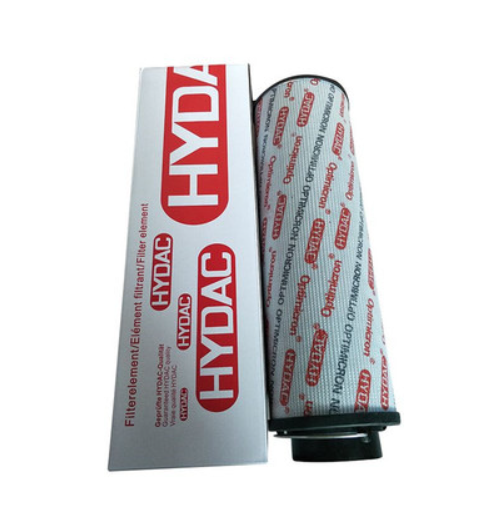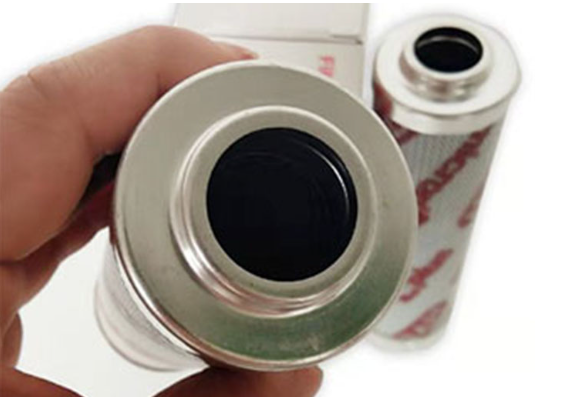HYDAC International, founded in 1963 by Werner Dieter and Otmar Schön, started out as a family business. Over the years, the company has grown and evolved into a global player in the hydraulics market, operating across various industries worldwide. Despite its significant growth and international presence, HYDAC International remains a family-owned business, adhering to a strong and successful business model.
The HYDAC oil filter element is an efficient filtration component designed specifically for hydraulic and lubrication systems. Utilizing high-quality filter materials, they effectively remove solid particles and impurities from the oil, enhancing the efficiency and reliability of the system. These oil filter elements feature high filtration performance, safeguarding critical components in hydraulic systems from particle damage and extending the system's lifespan. Widely employed across various industrial sectors including manufacturing, automotive, energy, and chemical industries, HYDAC oil filter elements provide reliable filtration solutions for a wide range of hydraulic and lubrication systems.

Our equivalent HYDAC filter element plays a vital role in pipeline systems responsible for conveying various fluids. Typically installed at the inlet of hydraulic systems, these filter elements efficiently capture metal particles, contaminants, and other impurities present in the fluid medium, ensuring the smooth operation of equipment. As the fluid passes through the filter, impurities are trapped while the clean filtrate exits through the outlet. Cleaning is a simple process, requiring removal of the filter element from the housing, treatment with industrial liquid, and reinstallation. With performance parameters matching those of comparable foreign filter elements, the Equivalent HYDAC filter element can seamlessly substitute for HYDAC filter elements, providing reliable filtration performance.
The HYDAC filter element finds application in various industries and systems where the filtration of fluid mediums is essential for optimal performance and reliability. Some common applications include:
Hydraulic Systems: Used in hydraulic systems of machinery, vehicles, and industrial equipment to remove contaminants and ensure the cleanliness of hydraulic fluid, thereby preventing damage to hydraulic components and maintaining system efficiency.
Lubrication Systems: Employed in lubrication systems to filter lubricants, oils, and greases, ensuring the smooth operation of moving parts, reducing friction and wear, and extending the lifespan of machinery and equipment.
Industrial Processes: Integrated into various industrial processes, such as manufacturing, metalworking, power generation, and chemical processing, to maintain the purity of process fluids, improve product quality, and safeguard sensitive equipment from damage.
Automotive: Utilized in automotive systems, including engines, transmissions, and fuel systems, to filter engine oil, transmission fluid, and fuel, enhancing engine performance, fuel efficiency, and longevity.
Marine and Offshore: Installed in marine and offshore systems, such as ship engines, hydraulic systems, and offshore drilling equipment, to remove contaminants from fluids, ensuring reliable operation and preventing corrosion in harsh marine environments.
Overall, the HYDAC filter element is essential across various industries and applications where maintaining fluid cleanliness and system reliability are paramount.

What is the structure of HYDAC filter element?
Filtration Media: The core component of the filter element is the filtration media, which is responsible for capturing contaminants and impurities present in the fluid. HYDAC filter elements may use various types of filtration media, including cellulose, synthetic fibers, metal mesh, or specialized materials designed for specific applications.
Filtration Media: The core component of the filter element is the filtration media, which is responsible for capturing contaminants and impurities present in the fluid. HYDAC filter elements may use various types of filtration media, including cellulose, synthetic fibers, metal mesh, or specialized materials designed for specific applications.
Support Structure: Surrounding the filtration media, there is usually a support structure that provides stability and prevents deformation of the filter media under pressure. This support structure may consist of perforated metal sheets, wire mesh, or molded plastic components.
End Caps: The filter element is typically equipped with end caps on both ends to secure the filtration media and support structure in place within the filter housing. These end caps are often made of durable materials such as metal or plastic and feature sealing elements to ensure a tight fit and prevent bypassing of contaminants.
Gaskets or Seals: To maintain a proper seal between the filter element and the filter housing, gaskets or seals are integrated into the design. These seals help prevent fluid bypass and ensure that all fluid passes through the filtration media for effective contaminant removal.
Outer Casing: Some HYDAC filter elements may feature an outer casing or protective layer around the filtration media and support structure. This casing provides additional protection against physical damage, corrosion, and environmental factors, extending the lifespan of the filter element.
Overall, the structure of a HYDAC filter element is designed to efficiently capture and remove contaminants from fluids while maintaining durability and reliability in various industrial applications.
What is the technical parameters of HYDAC oil filter element?
The filter element is constructed using high-quality filter materials such as glass fiber (imported HV or domestic) and paper, with a micron range spanning from 1 to 100μm. It is equipped with O-rings made of silicone, NBR, or Viton, ensuring reliable sealing performance across a wide temperature range of -30℃ to +100℃. Designed to effectively filter various fluids including hydraulic oil, lubricating oil, phosphate hydraulic oil, emulsion, and water glycol, the filter element finds application in diverse industries such as metallurgy and steel, thermal and nuclear power generation, electronics, Oil & Gas, petrochemicals, railway internal combustion engines, and more.







